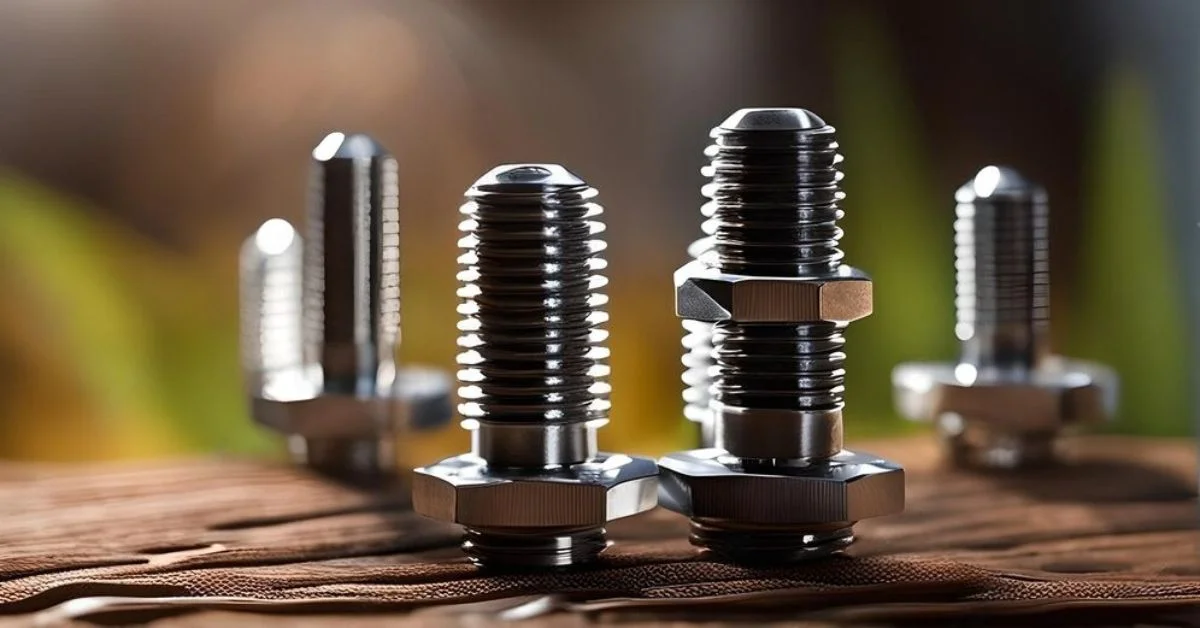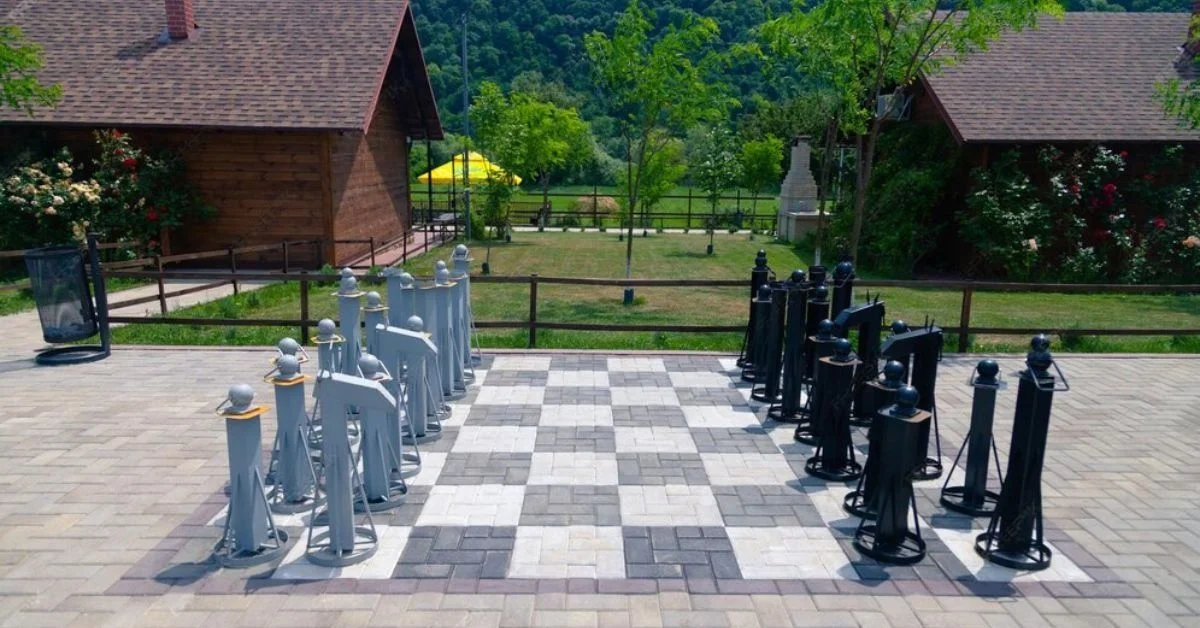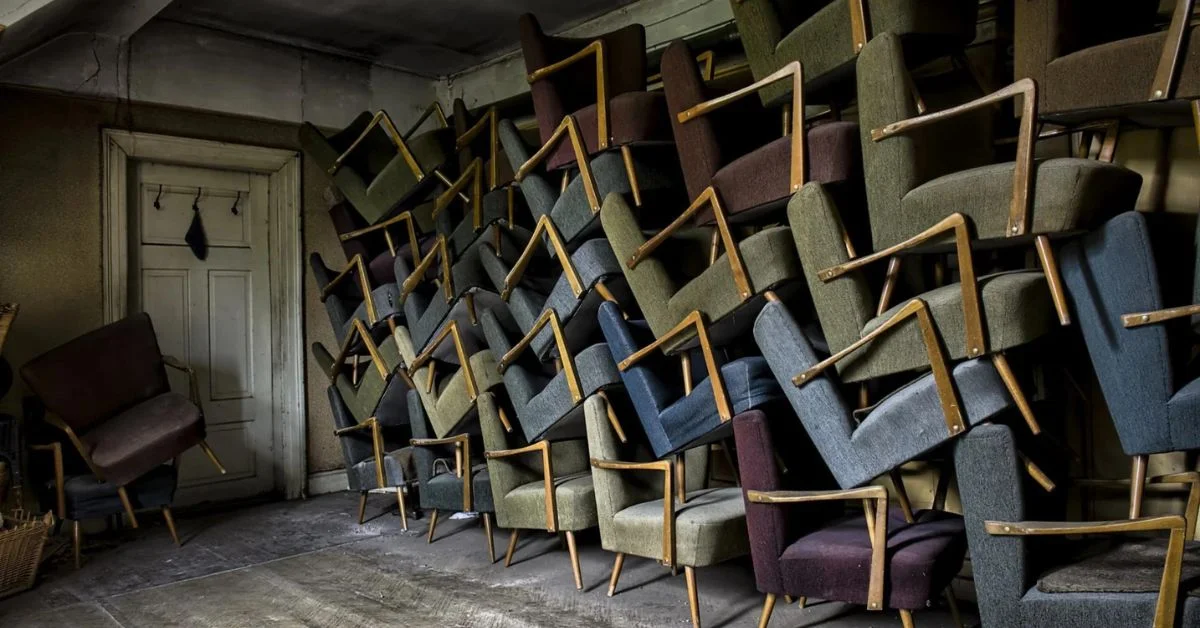HOME IMPROVEMENT
Essential Considerations for Choosing High-Quality Outdoor Fasteners

Selecting the right fasteners is crucial when constructing a durable and attractive outdoor deck. These components are necessary to ensure the decking structure’s longevity and safety. Among the various options available, decking screws are specifically designed to withstand the tough nature and conditions of outdoor environments. So, this article looks into the vital aspects of choosing the best screws for decking purposes, emphasising their types, materials, and applications.
Role of Specialised Fasteners in Deck Construction
Outdoor decks are exposed to various weather conditions, from intense sunlight to frost. This exposure can lead to expansion, contraction, and other stresses on the building materials. Decking screws are engineered to accommodate these movements without compromising the deck’s structural integrity. They are typically made from high-quality metals that resist corrosion and wear. Moreover, their design includes features like sharp points and aggressive threads, which ensure a deep, secure, and lasting hold in the decking material.
Materials and Coatings: Enhancing Durability and Aesthetics
The choice of material for screws is essential. Stainless steel and coated steel are the most common options due to their resistance to rust and corrosion. Stainless steel ones are ideal for areas with high exposure to moisture, such as poolsides or coastal homes. On the other hand, coated screws come in various colours to match the decking material. It offers not only durability but also aesthetic appeal.
Galvanised ones are another popular choice. They undergo a zinc coating process, significantly enhancing their degradation resistance. This process, however, can be less durable than the stainless steel option, making them more suitable for areas with less exposure to corrosive elements.
Selecting the Right Type of Screw for Different Decking Materials
The type of decking material influences the choice of screws. Hardwood decks require screws that can penetrate tough surfaces without splitting the wood. For these materials, ones with a self-tapping design and a sharp point are advantageous as they minimise the need for pre-drilling and reduce labour time.
Composite decks are made from a unique blend of wood fibres and plastic. They need screws designed to prevent the material from ‘mushrooming’ on the surface. This can occur when the material is pushed up and out around the screw head. Screws made for composite materials typically have a reverse thread near the head to compact the material as they are driven in.
Installation Techniques to Maximise Effectiveness
Proper installation is as important as selecting the right type. It is essential to drive them perpendicularly to the deck boards to ensure maximum hold. Using a power drill with a torque setting helps maintain a consistent driving depth, which is crucial for the aesthetic uniformity of the deck surface. Additionally, spacing them evenly across the deck enhances the visual appeal and distributes the load evenly, reducing the risk of warping.
Long-Term Maintenance for Lasting Durability
Maintenance is necessary to extend a deck’s life and its components. Regular inspections can help identify any loose screws or areas of the deck that may need attention. Tightening loose screws and replacing damaged ones promptly can prevent further damage and maintain the deck’s safety and appearance. Cleaning the deck with appropriate solutions and tools can also prevent dust, debris, and moisture build-up. This can accelerate the corrosion of metal components. The choice of screws is important in deck construction. Opting for high-quality decking screws suitable for specific material and environmental conditions can dramatically increase the longevity and safety of an outdoor deck. Regular maintenance further supports the integrity and beauty of the deck structure, proving that a well-thought-out approach to fastening can lead to lasting results in deck construction and maintenance.
GADGETS
Choosing the Right Driveway Bollards for Your Home: Factors to Consider

In every homeowner’s journey, there are selections and decisions to make that significantly impact the safety and aesthetics of the home. One such vital choice is selecting the appropriate driveway bollards. These security structures are increasingly becoming a commonplace in residential driveways. They provide safety, deter theft, enhance aesthetic appeal, and contribute to the overall value of your home.
Key Factors to Consider
Here, we are going to dig deep into several factors you need to consider getting the right driveway bollards.
1. Material
The choice of material for your driveway bollards plays a critical part in their durability, maintenance needs, and overall look. Popular materials include steel, stainless steel, aluminium, and concrete, each with its advantages and functionality.
2. Functionality
Driveway bollards can either be decorative or functional, or both. Functional bollards are usually stronger and are designed to resist vehicle impact, while decorative bollards enhance the visual appearance of your property. Consider your priorities before making a choice.
3. Design and Aesthetic Appeal
The design of your bollards ought to blend with the overall theme of your home. A mismatch could disrupt the aesthetic balance of your property. The colours, styles, and finishes are all important elements that will help ensure your bollards are in harmony with your home’s aesthetic.
4. Size and Placement
The size of your bollards and their placement determine their effectiveness in securing your property. For maximum barrier protection, ensure the bollards are placed strategically at your driveway’s entrance and exit points.
In Conclusion
Choosing the right driveway bollards requires thoughtful consideration of the aforementioned factors. Material, functionality, design, aesthetic appeal, size, and placement all are crucial elements that should be considered. It’s also worth noting that while bollards significantly enhance security, they should not interfere with the normal functionality of your driveway. A well-chosen set of bollards can be a great asset to your home, adding both practicality and aesthetic value. So take your time, do your research, consider the factors mentioned in this article, and you’re likely to come away with bollards that are fit for purpose, durable, and pleasing to the eye.
HOME IMPROVEMENT
Brooklyn’s Junk Removal Revolution: Simplify Your Life Today

In Brooklyn, where space is as precious as time, clutter is more than just an inconvenience—it’s a major headache. But there’s a solution that’s become increasingly popular: junk removal services. Right from the get-go, it’s essential to know you can hire a team of professional junk removal experts to handle the mess you can’t (or don’t want to) deal with. This approach not only simplifies your life but also contributes to a cleaner, more organized Brooklyn. Whether it’s old furniture, electronics, or just general clutter, “junk removal Brooklyn” is your go-to keyword for finding the help you need to reclaim your space.
The Rise of Junk Removal in Brooklyn
Brooklyn’s transformation into a bustling urban hub has seen an uptick in consumption—and as a result, an increase in waste. Gone are the days when junk would just pile up in corners or basements. Enter junk removal Brooklyn services that have revolutionized how residents deal with their unwanted items. These services range from small, locally-owned outfits to larger companies, all competing to help you declutter. They’re not just removing trash; they’re providing peace of mind and an opportunity to live a minimalist lifestyle in a city that never sleeps.
How Junk Removal Brooklyn Services Work
When you decide it’s time to declutter, the process is simple. A quick search for junk removal Brooklyn will yield numerous services ready to help. After booking, a team comes to your place, assesses what you’ve got, and then hauls it away. They take almost everything, from bulky furniture to outdated electronics, but there are exceptions, so it’s always good to check. The best part? Many companies focus on eco-friendly practices, ensuring that whatever can be recycled or donated will be, reducing the impact on landfills and giving your items a second life.
Benefits of Opting for Junk Removal Services
Choosing to use a junk removal Brooklyn service means more than just getting rid of stuff. It encompasses a range of benefits that affect not only your immediate environment but also contribute positively to the community and the planet. Here are some key advantages of choosing a professional junk removal service:
Enhanced Living Space: Removing clutter and unnecessary items from your home can dramatically transform your living space. It opens up room, making your home feel more spacious, livable, and breathable. This optimization can lead to a more organized and aesthetically pleasing environment.
Environmental Sustainability: Many junk removal services prioritize eco-friendly practices. This includes:
- Recycling: Ensuring that recyclable materials are processed correctly, reducing waste in landfills.
- Donation: Items in good condition are often donated to local charities, providing those in need with furniture, appliances, and other goods, thus extending the life cycle of these items.
- Proper Disposal: Hazardous materials are disposed of in a manner that minimizes environmental impact.
Time and Energy Savings: Junk removal services take care of the heavy lifting and disposal, saving you time and energy. This is especially beneficial for large items or significant amounts of waste, where doing it yourself would be impractical and exhausting.
Safety: Removing junk, especially heavy or bulky items, can be dangerous without the proper equipment and expertise. Professional services ensure that items are removed safely, reducing the risk of injury.
Legal Compliance: Proper disposal of certain items is regulated by law. Junk removal companies are knowledgeable about these regulations, ensuring that items are disposed of in compliance with local, state, and federal laws.
Real Estate Advantages: For those selling their home or renting out space, clearing out unwanted items can make the property more appealing to potential buyers or tenants, potentially increasing its market value.
Choosing the Right Junk Removal Service in Brooklyn
Finding the right service requires a bit of research. Consider factors like pricing, disposal methods, and customer reviews. Pricing can vary, so it’s important to get quotes from a few companies. Check their environmental policies too—knowing your junk won’t just end up in a landfill can be a big relief. Customer reviews are invaluable for getting a sense of reliability and quality of service. A bit of homework can ensure you find the best junk removal Brooklyn service to meet your needs.
DIY vs. Professional Junk Removal
Tackling clutter on your own can seem like a cost-saving move, but it comes with its own set of challenges, from the physical labor involved to figuring out what to do with all the stuff. Professional services, on the other hand, take the hassle out of the equation. They have the experience, equipment, and knowledge to dispose of items properly. While DIY might save you a few bucks, the convenience and efficiency of professional junk removal Brooklyn services often outweigh the cost.
The Future of Junk Removal in Brooklyn
The future looks bright for junk removal Brooklyn services, with advancements in technology making it easier to book and manage pick-ups and a growing emphasis on sustainable disposal methods. As residents become more environmentally conscious, the demand for eco-friendly junk removal options is likely to rise. The industry is set to evolve, with innovations that could include more sophisticated recycling techniques and community-based programs aimed at reducing waste. Brooklyn could lead the way in setting new standards for how urban centers manage junk removal.
Key Takeaway
“Junk removal Brooklyn” isn’t just a keyword; it’s a lifeline for anyone looking to declutter their space and simplify their life. From the convenience of professional services to the environmental and psychological benefits, the advantages are clear. As Brooklyn continues to grow and evolve, so too does the importance of responsible waste management. By choosing the right junk removal service, you’re not just cleaning up your space; you’re contributing to a larger movement towards sustainability and mindfulness in consumption. It’s time to take the first step towards a cleaner, more organized home and, by extension, a more harmonious life. Remember, decluttering doesn’t have to be a daunting task—with the right help, it can be a refreshing and even liberating experience.
HOME IMPROVEMENT
Luxury on a Budget: Tips for Affordable Bathroom Upgrades in San Angelo

Nestled along the picturesque Concho River in West Texas, San Angelo exudes a charming blend of historic beauty and modern allure. As residents of this vibrant city seek to enhance their living spaces, the bathroom often takes center stage. However, achieving a luxurious bathroom transformation while staying within budget can seem like a daunting task. Fear not, for in this guide, you will explore savvy tips and tricks to elevate your bathroom without breaking the bank, with insights tailored to homeowners seeking affordable upgrades and the expertise of local plumbers in San Angelo.
Refinishing Bathtubs
Refinishing your bathtub is one of the quickest and most cost-effective ways to upgrade your bathroom. Over time, bathtubs can become worn, stained, or outdated, but instead of replacing them entirely, consider refinishing them to give them a fresh new look.
Bathtub refinishing kits are available in hardware stores, which can be a budget-friendly option if you’re handy with home improvement projects.
Elevating Your Bathroom Design
Upgrading your bathroom faucets is another easy yet great way to add a touch of luxury to your space without breaking the bank. Look for stylish yet cost-effective options that complement your bathroom’s aesthetic while staying within your budget.
You can shop at home improvement stores or online retailers for budget-friendly faucet options. You’ll be surprised at the variety of stylish designs available at affordable prices. Additionally, opting for faucets with water-saving features can help you save on your water bill in the long run, making them both stylish and practical upgrades for your bathroom in San Angelo.
Updating Lighting Fixtures
Good lighting will make all the difference in a bathroom, transforming it from ordinary to extraordinary. Upgrading your lighting fixtures is a quick and inexpensive way to enhance the ambiance of your space while also improving functionality.
Consider replacing outdated fixtures with modern, energy-efficient options that provide ample illumination without breaking the bank. LED lighting, in particular, is a cost-effective choice that offers long-lasting brightness and energy savings. Adding dimmer switches can also allow you to change the lighting according to your mood and create a relaxing spa-like atmosphere in your bathroom.
Incorporating Eco-Friendly Elements
Another excellent way to enhance your bathroom’s appeal while being budget-conscious is to incorporate eco-friendly elements. Sustainable upgrades benefit the environment and save you money on utility bills.
Look into installing low-flow showerheads and toilets to reduce water consumption without compromising performance. These fixtures are readily available in San Angelo and can significantly decrease water usage, lowering water bills without sacrificing comfort.
When to Call in the Experts
While many bathroom upgrades can be done DIY style, specific tasks are best left to the professionals, especially when it comes to plumbing. Whether you’re installing a new shower, relocating plumbing fixtures, or dealing with a stubborn leak, hiring professional plumbers in San Angelo can save you time, money, and hassle in the long run. They have the expertise, tools, and experience to tackle even the most challenging plumbing projects efficiently and effectively. They can also help you avoid costly mistakes and ensure your bathroom upgrades are done safely and up to code.
Transforming your bathroom into a luxurious oasis doesn’t have to cost a fortune. By following these budget-friendly tips for affordable bathroom upgrades in San Angelo, you can achieve the look and feel of a high-end spa retreat without breaking the bank. So go ahead, unleash your creativity, and turn your dream bathroom into a reality!

 ENTERTAINMENT4 days ago
ENTERTAINMENT4 days agoExploring the Kristen Archives: A Treasure Trove of Erotica and More

 TECHNOLOGY4 months ago
TECHNOLOGY4 months agoBlog Arcy Art: Where Architecture Meets Art

 ENTERTAINMENT1 day ago
ENTERTAINMENT1 day agoKiss KH: The Streaming Platform Redefining Digital Engagement and Cultural Currents

 EDUCATION1 day ago
EDUCATION1 day agoLingrohub Platform: A Complete Student Access Guide

 LIFESTYLE4 months ago
LIFESTYLE4 months agoThe Disciplinary Wives Club: Spanking for Love, Not Punishment

 TECHNOLOGY1 day ago
TECHNOLOGY1 day agoCasibom: The Digital Alchemy Reshaping Systems, Society, and Self

 TECHNOLOGY1 day ago
TECHNOLOGY1 day agoSecuring Your Online Presence: The Ultimate Guide to Buying an SSL Certificate

 HEALTH1 day ago
HEALTH1 day agoThe Surprising Benefits of Weight Loss Peptides You Need to Know










